Articles on Animation &Books 04 Mar 2009 08:36 am
Tekenfilm
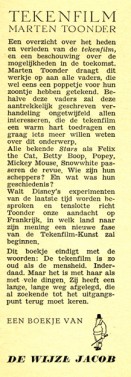 - Marten Toonder lived through much of the history of Dutch animation. (Like many other throughout Europe he gained the moniker of the “Walt Disney of Holland.”)
- Marten Toonder lived through much of the history of Dutch animation. (Like many other throughout Europe he gained the moniker of the “Walt Disney of Holland.”)
He was born in 1912 and died July, 2005. In 1940, with puppet animator, Joop Geesink, he formed the Geesink-Toonder Studio. The break-up of the two led to his forming the Toonder Studio in 1942.
He left this studio, as tituilar head, to get back to illustration in 1965, and ultimately retired in 1977.
Toonder is probably best remembered for his several successful comic strips. You can visit a sample of these here or here.
He made animated shorts of his comic strip, Tom Puss, which you can see on YouTube.
I make Toonder the subject of this post because I have an early book about animation which he wrote. Called Tekenfilm, it seems to have been written in 1946; at least that’s the only date I can find in the smallish publication.
It’s in Dutch, so I’m not able to read the book. However, I thought I’d post a couple of pages of the book . I haven’t been able to find any reference to the publication to date. ___________________The book’s flyleaf – in Dutch
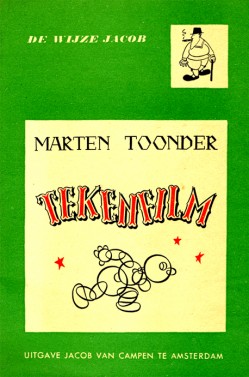
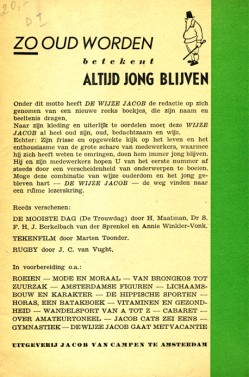
The book’s Front cover & Back cover
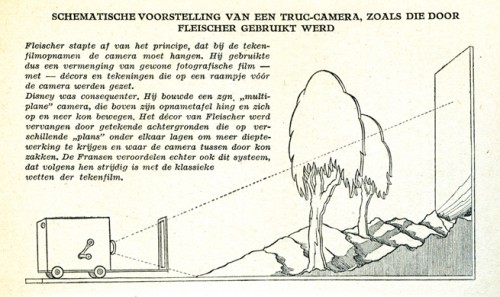
Here the Fleischer studio gets credit for the Multiplane Camera.
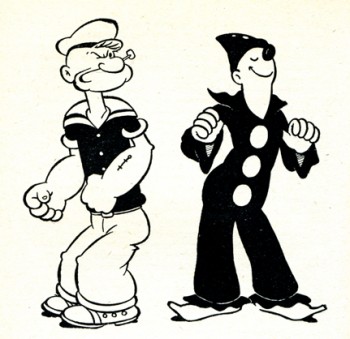
I like the way Popeye is drawn. Koko looks more on model.
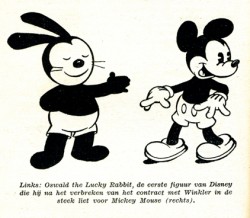
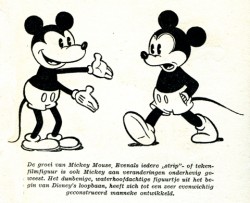
A wierd looking Oswald leads to Mickeys.
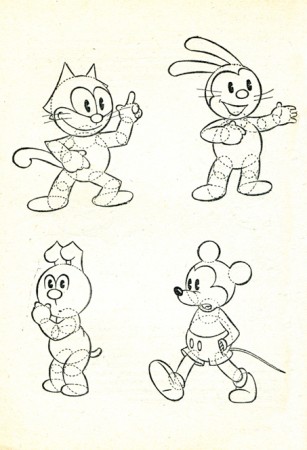
How to try to draw some characters.
Where’s Bugs?
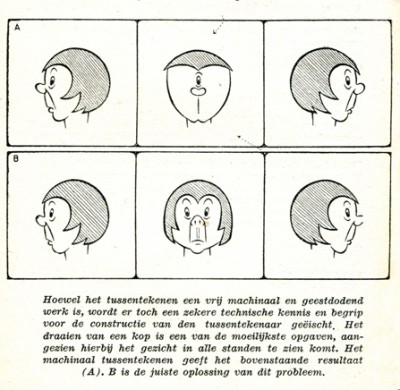
Here’s a lesson you still don’t see in many animation books.
How not to draw the mechanical inbetween.
His solution isn’t the best.
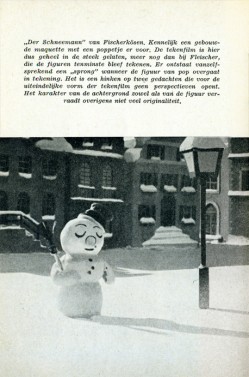
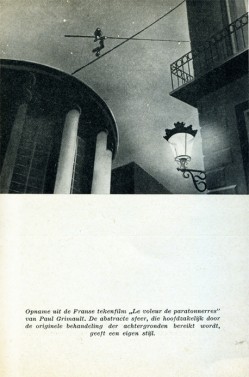
Ending with two European cartoons of merit from 1944:
The Snowman in July by Hans Fischer-Kösen
and Voleur de Paratonnerres by Paul Grimault
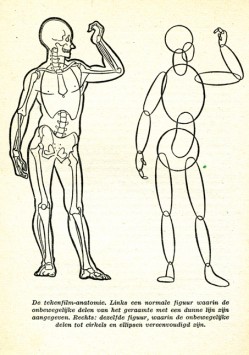
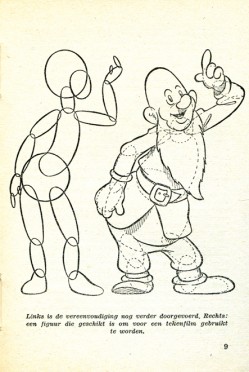
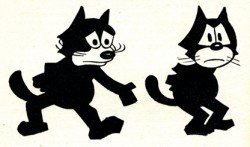
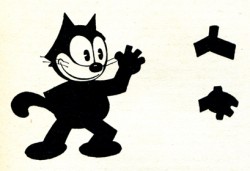
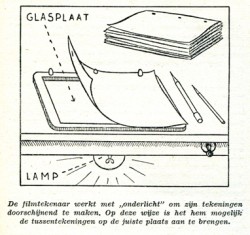
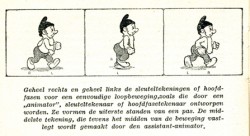
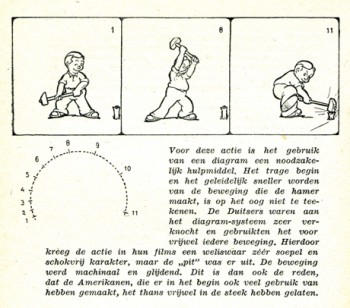

on 04 Mar 2009 at 12:32 pm 1.Fabián Fucci said …
Ahhh, it would be so nice to have a copy of this book!
on 04 Mar 2009 at 3:13 pm 2.Hans Perk said …
Actively looking for this rare little book in Holland, it still took me some five years to find a copy, in 1982. Being Dutch, of course I CAN read it. Believe me, it is more a curiosity than a text book. The extensive, meticulously researched Toonder Bibliography of the 80s has its publication date as 1947.
Marten Toonder was called the Disney of Holland. At the height of his studio’s days, on de Herengracht in Amsterdam, they were some fifty people producing short films and commercials, and a stream of comic strips, by Toonder himself and other great artists as Hans Kresse and Piet Wijn, etc.
In 1950, after a short period of working with Dave Hand in Denmark–Hand had just come from Rank’s Cookham studio in England–two Danes, Børge Ring and Bjørn Frank Jensen, moved to Holland to work for Toonder, and together with a third Dane, Per Lygum, who joined them in 1952, they were the main stay of Toonder’s animation department, which was led by Harold Mack, until Ring left in 1972. In the 60s, the studio moved into the small castle Nederhorst in the countryside, and they were joined by Geesink studios (in the stables) after they closed their Amsterdam studio called Dollywood.
Short films to look for: De Gouden Vis (The Golden Fish) early 50s, Moonglow (mid 50s), Man en Paard (Man and Horse) 1970 – this last film is a very funny though seldom seen after-hours effort of The Three Danes, and shows the style so typical of Børge’s later shorts.
In 1983, Toonder released Holland’s first animated feature film, Als Je Begrijpt Wat Ik Bedoel, directed by Harry Geelen, who had been director of commercials at Toonder for many years, and animation directed by Bjørn Frank Jensen and Bob Maxfield (who worked at Disney’s in 1946). I myself worked as assistant for Børge Ring on this film, and did a bit of junior animation. Most of the finishing of the film was done at Top Craft in Japan. After this film, Toonder sort of faded away until it became no more than an office protecting its copyrights in Almere north-east of Amsterdam…
Reading Toonder’s bio, though, it seems the most interesting time for Toonder was during the war, when Toonder made a film for the Germans as a means to keep artists from going to work camps in Germany and as a front for the illegal printing operation in his back rooms. Toonder himself did elaborate illustrations for these publications, some now available in book form in “The Other Toonder ” (translated title). Toonder’s first comic strip efforts with Tom Puss for the national newspaper De Telegraaf were clearly anti-German (Tom Puss in the Country of the Boot Giants…!), which may explain its early success. Yet animation was Toonder’s first love, something it seems he got hooked on after meeting Dante Quinterno in Brazil in the late 30s…
on 04 Mar 2009 at 3:49 pm 3.Michael said …
Brilliant, Hans. Thanks for the information. I’d tried reading a couple of pages by way of Babelfish, but found it too uninformative (even through the poorly translated bits.)
on 05 Mar 2009 at 11:07 am 4.harrie verstappen said …
Thanks for the link. Like I say there, this is the first book on animation I ever read – lost it long ago. Actually, I prefer Preston Blair’s.
One comment here: The page on “How to draw characters” as I remember it purports to show how those four characters are almost the same, construction-wise (just like, I may add, Tom Poes himself). That’s why no Bugs!